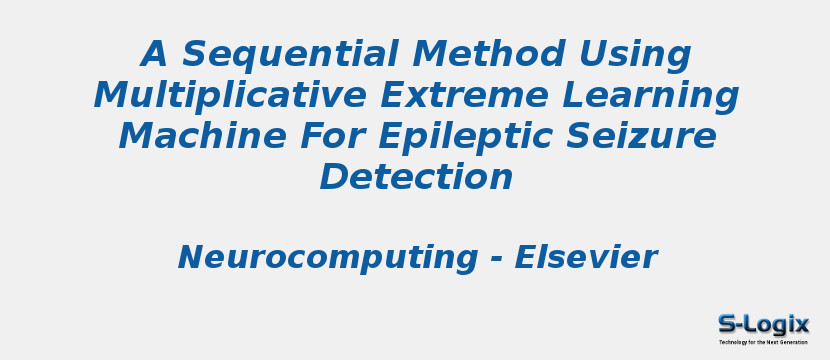Research Area: Machine Learning
Epilepsy, one of the most common neurological disorders of the human brain, is unpredictable and irregular. There is much difficulty involved in its detection. Here, a sequential processing feature extraction method and a novel multiplicative extreme learning machine are proposed for using in the electroencephalogram (EEG) classification process towards epileptic seizure detection. Firstly, a discrete wavelet transform (DWT) algorithm based on the frequency decomposition is used to obtain the sub-band wavelet coefficients. Secondly, two-dimensional (2D) and three-dimensional (3D) phase space reconstruction (PSR) of the sub-band are calculated to reveal the nonlinear chaos characteristics of signals in the high dimension. Thirdly, and differing from other statistical methods, the singular values are calculated based on the covariance matrix of 2D or 3D phase space as features that reduce the correlation of each dimension and which demonstrate the crucial variance in the original EEG signals. A combination of the proposed sequential methods can extract the significant features of epileptic seizure signals for classification. Finally, a novel multiplicative extreme learning machine (M-ELM) is proposed for using in the classification process. As compared with the normal ELM, support vector machine (SVM) with different kernels and backpropagation (BP) neural networks, the use of M-ELM can further improve the classification accuracy rate of the seizure signals, seizure free signals and healthy signals from the public dataset. Tests of the proposed epilepsy detection approach can achieve the highest 100% detection accuracy with rapid calculation speed.
Keywords:
Author(s) Name: Dazi Li, Qianwen Xie, Qibing Jin, Kotaro Hirasawa
Journal name: Neurocomputing
Conferrence name:
Publisher name: Elsevier
DOI: 10.1016/j.neucom.2016.06.056
Volume Information: Volume 214, 19 November 2016, Pages 692-707
